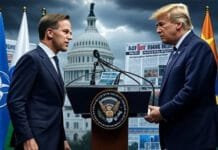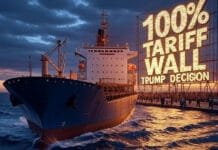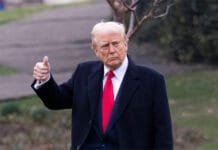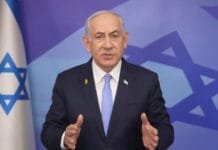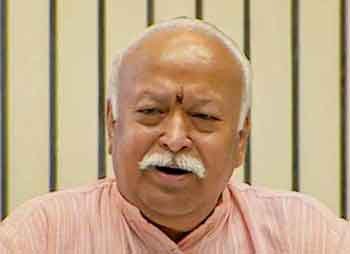In a groundbreaking shift in US-Asia trade relations, President Donald Trump has announced a new trade agreement between the United States and Japan, marking a pivotal transformation in tariffs and international economic cooperation. The move reduces the previously imposed 25% tariff on Japanese imports to 15%, signaling a dramatic policy change intended to stimulate American manufacturing, correct trade imbalances, and forge a stronger economic alliance with Tokyo.
Trump’s Major Trade Win: Tariffs Reduced from 25% to 15%
On Tuesday, President Trump confirmed via Truth Social that the tariff on Japanese goods entering the United States will now stand at 15%, down from the earlier 25% levy that had sparked economic tensions. He described the deal as a “massive breakthrough” that will create millions of American jobs, promote fairer trade, and expand opportunities for US exporters, especially in the automobile and agriculture sectors.
“This has never happened before,” Trump wrote. “The US will always maintain good relations with Japan. This deal puts America First and ensures American strength at home and abroad.”
The announcement came just weeks after Trump had issued a stern warning to Japan via a formal letter to Prime Minister Shigeru Ishiba, declaring the US intention to impose the 25% tariff starting August 1. That deadline prompted rapid negotiations, culminating in this historic accord.
Japan to Invest $550 Billion in US Economy
As part of the agreement, Japan has committed to investing a staggering $550 billion into the US economy. This investment package will include significant funding for:
Advanced manufacturing plants across Midwest states
Research and development hubs in Silicon Valley
Expanded automobile assembly lines in Michigan, Ohio, and Tennessee
Increased imports of American rice, poultry, and dairy
This injection of capital is expected to directly boost job creation and economic development in key industrial zones across the country.
Automobiles and Agriculture: Two Key Sectors Unlocked
In one of the most significant breakthroughs of this deal, Japan will open its domestic market to American-made cars and agricultural products, two sectors that had long been bottlenecked by regulatory barriers and import limitations.
For US automakers like Ford, Tesla, and General Motors, this agreement could represent billions in additional annual revenue, with Japanese consumers gaining better access to premium US vehicles. Meanwhile, American farmers will see expanded exports of rice, corn, beef, and soybeans, long subjected to quotas and steep Japanese tariffs.
This liberalization of trade between two of the world’s largest economies is being touted as a “model for 21st-century bilateral agreements” that focus on reciprocity, sovereignty, and strategic alignment.
US Aims to Shrink $69.4 Billion Trade Imbalance
According to the United States Census Bureau, the trade imbalance with Japan reached $69.4 billion in 2024, overwhelmingly in Japan’s favor. By lowering import duties while simultaneously increasing US exports to Japan, Trump aims to narrow this gap significantly in the coming fiscal year.
The Trump administration expects a shift of major Japanese production lines to American soil, incentivized by favorable terms and reduced risk of future tariffs. This aligns with Trump’s longstanding campaign promise to “bring back American jobs” and ensure that “Made in America” becomes a global standard once again.
Philippines Trade Deal: 19% Tariff on Imports, Zero on US Exports
In another strategic move, President Trump also declared a trade agreement with the Philippines, under which a 19% tariff will be imposed on Filipino exports to the US, while American exports to the Philippines will remain tariff-free.
This asymmetric agreement was announced following the visit of President Ferdinand Marcos Jr., who Trump described as a “tough negotiator and a valued ally.” According to Trump, the Philippines has agreed to open its markets more fully to American technology, defense systems, agricultural goods, and energy services.
This shift is seen as a key step in reinforcing America’s Indo-Pacific strategy, solidifying allies in the region, and countering Chinese economic influence.
Indonesia Hit with 19% Tariff, EU and China Talks Next
Trump’s trade overhaul continues with the imposition of a 19% tariff on Indonesian imports, as the US presses Jakarta to reevaluate its trade practices. Though no official agreement has yet been reached, Trump hinted at ongoing discussions.
Meanwhile, high-stakes negotiations with the European Union are scheduled for Wednesday in Washington, with EU officials arriving for a series of roundtable discussions on steel, digital services, and pharmaceuticals.
China Faces 30% Tariff, Negotiations Underway Until August 12
Relations with China remain tense as the Trump administration maintains a 30% base tariff on Chinese goods. However, a temporary window for renegotiations has been granted, running until August 12. Talks are being led by US Treasury Secretary Scott Bessant, who will meet his Chinese counterparts in Stockholm next week.
Bessant emphasized the importance of reshaping the global economy by rebalancing consumption and production patterns between the US and China.
“We are moving America away from dependence on imports and pushing China to open its economy in ways it has resisted for decades,” said Bessant.
Geopolitical Significance of Trump’s Trade Diplomacy
These multi-pronged tariff deals reflect a bold and assertive trade doctrine that aims to realign global economic power in favor of American interests. By reducing tariffs for allies like Japan while increasing pressure on others, the US is leveraging its consumer market as a tool for diplomatic advantage.
In strategic terms, these agreements help:
Strengthen American supply chains
Encourage foreign direct investment (FDI)
Shift global manufacturing away from adversarial regimes
Reinforce America’s leadership in global trade norms
This is not just a reshuffling of tariffs—it is a reshaping of the world’s economic order.
Conclusion: A New Era of America-First Trade Policy
With the US-Japan trade deal now in place, along with similar pacts involving the Philippines and others under discussion, President Trump is ushering in what some analysts are calling a “second industrial renaissance” for the American economy.
By using tariffs not merely as penalties but as negotiating levers, the Trump administration has flipped the conventional model of free trade. The result is a dynamic, America-centric framework where allies are rewarded, adversaries are challenged, and economic nationalism becomes the cornerstone of foreign policy.
As the world watches closely, one thing is clear: America is no longer playing defense in trade — it’s rewriting the rules.


